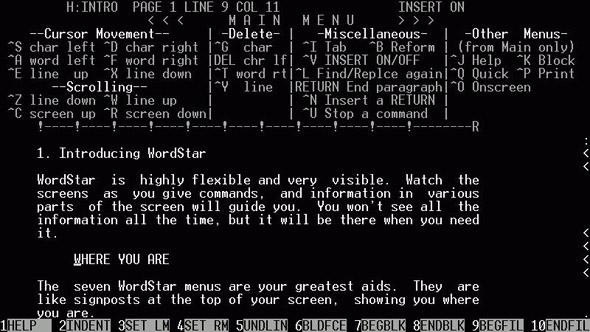George R.R. Martin knows what’s up. He’s been writing science fiction and fantasy for decades, so he’s not going to waste time trying to get Microsoft Word to understand that the House of Targaryen and cities like Qohor and Asshai are all things he means to type. In an interview with Conan O’Brien on Tuesday he laid it all out. “I hate spell-check, yes,” he said.
But then he did one better. He told Conan that he has two computers, one that’s up-to-date and has Internet access, and one that’s ancient and runs DOS. He uses the newer machine for browsing the Web and checking emails, but he turns to the older one when it’s time to write. And his late-’80s software of choice is the classic word processor WordStar 4.0.
4.0 was the second WordStar version to work on DOS, but was a rewrite of 3.0, which had been directly ported to DOS from CP/M. Martin says that to this day it fulfills his every writing need.
I actually like it. It does everything I want a word processing program to do and it doesn’t do anything else. I don’t want any help, you know? I hate some of these modern systems where you type a lowercase letter and it becomes a capital. I don’t want a capital. If I wanted a capital I would have typed a capital. I know how to work the shift key!
Minimalist word processors like WriteRoom and Byword are popular among writers and other users looking for a distraction-free writing window. Plus many people use apps like Freedom and Concentrate to control which websites they can navigate to while they’re working, thus reducing distractions. But Martin’s solution seems optimal, especially if you’re sitting down to write thousands of pages.
